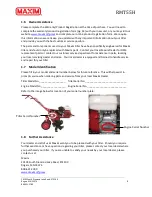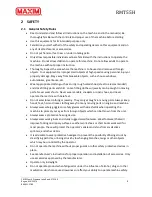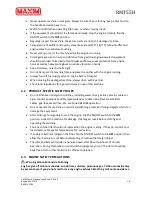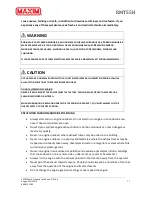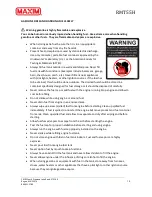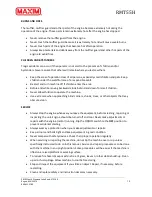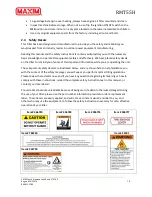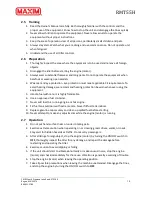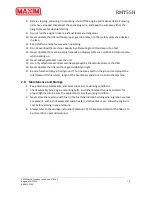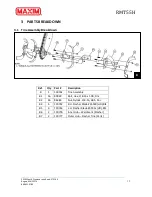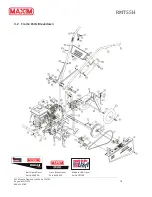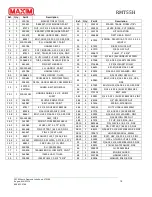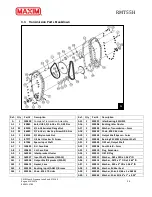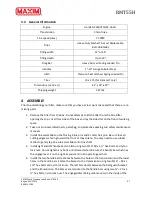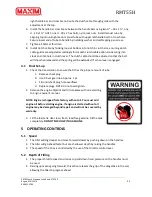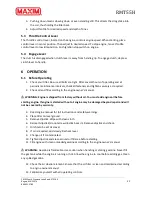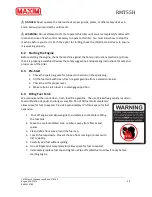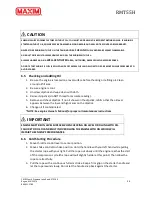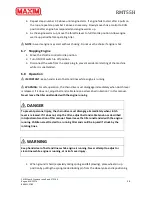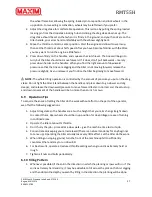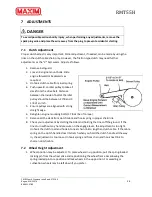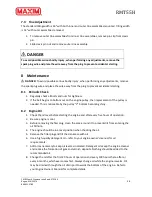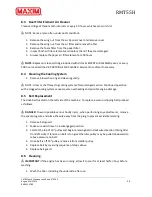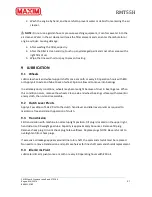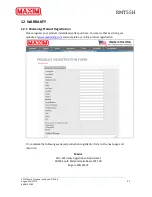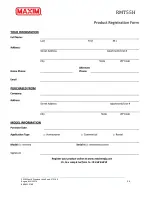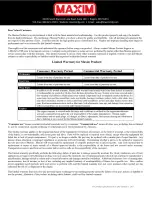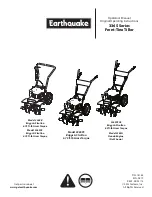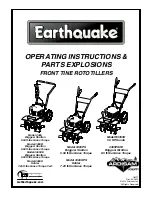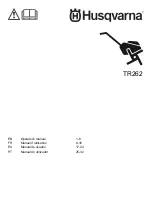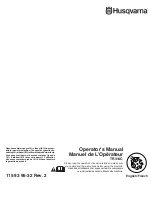
RMT55H
20195 South Diamond Lake Road, STE 100
Rogers, MN 55374
800.621-2789
22
right handle bar and cross brace. Route the clutch cable through guide with the
adjustment at the top.
6.
Install the handle bar cross brace between the handle bars using two ¼” – 20 x 1 ½”, one
¼ - 20 x 1 ¾” HHSF, one ¼ - 20 x 2 hex bolts, nylon lock nuts. Install manual tube by
aligning top mounting hole on manual tube with upper left handle bolt on cross brace.
Secure lower end of tube to handle by installing washer and self-tapping pan screw.
7.
Tighten all bolts at this time.
8.
Install clutch cable by hooking loop at bottom into notch in clutch arm, ensuring clutch
cable guides are adjusted accordingly for smooth clutch cable action. Hook spring into
clevis and into hole in clutch lever. The clutch cable should be adjusted so that the belt
will slip when released and the spring will be extended ¼” when lever is engaged.
4.1
Final Set-up
1.
Check the transmission to ensure that it has the proper amount of lube
a.
Remove check plug.
b.
Use 90 wt. gear lube. Approx. 1 pt.
c.
Fill until check plug hole overflows.
d.
Replace plugs. NOTE: do not overtighten.
2.
Remove the engine dipstick and fill crankcase with oil according
to engine owner’s manual.
NOTE: Engine is shipped from factory without oil. You must add
engine oil before starting engine. If engine is started without oil
engine may be damaged beyond repair and will not be covered by
warranty.
3.
Fill the fuel tank. Use clean, fresh, lead-free gasoline. Fill the tank
completely.
DO NOT MIX OIL WITH GASOLINE.
5
OPERATING CONTROLS
5.1
Speed
1.
The tiller will dig deeper and move forward slower by pushing down on the handles.
2.
The tiller will go ahead faster but at a shallower depth by raising the handles.
3.
The speed of the tines is controlled by the use of the throttle control lever.
5.2
Depth of Tilling
1.
The proper throttle speed and correct up and down hand pressure on the handles must
be used.
2.
Raising up means going forward, this action releases the grip of the drag stake in the soil,
allowing the tiller to progress ahead.

